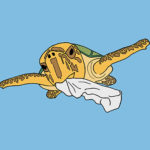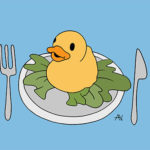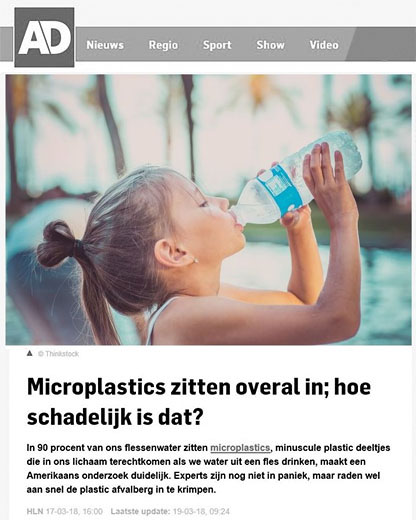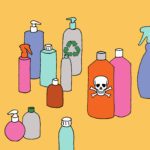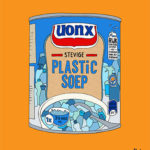Microplastic & Microbeads
Plastic vervuiling in de oceaan komt voor in allerlei soorten en maten. Er zijn grote voorwerpen van tientallen meters lang, maar ook plastic tasjes maken deel uit van de plastic soep. Zelfs hele kleine stukjes plastic van een paar millimeter zitten in de oceaan. Deze noemen we micro-plastics. Er zijn twee soorten microplastics: primaire stukjes die altijd al 5 millimeter of kleiner waren; en secundaire, die zijn ontstaan door verwering en fragmentatie van grotere plastic voorwerpen 1,2,3.
Primair microplastic

Weet jij in welke producten microplastic zit? Kijk nu of jij microplastic vrij leeft op deze site van beatthemicrobead.
Primair microplastic, of wel: ‘microbeads’, worden soms gebruikt in cosmetica producten zoals scrub zeep en make-up. Omdat het plastic zo klein is lijkt het niet uit te maken dat het in de natuur terecht komt, maar niets is minder waar. Jaarlijks komen grote hoeveelheden microplastic terecht in de oceaan waardoor het een grote impact heeft op het milieu.
”263.000 kilo microplastic verdwijnt jaarlijks door het doucheputje in Amerikaanse badkamers”.
Er is onderzocht dat alleen door het gebruik van gezichtsscrub in Amerika, er jaarlijks 263.000 kilo microplastic in de oceaan terecht komt 4. Dit staat gelijk aan 37 volwassen olifanten van 7000 kilo die zo door het doucheputje verdwijnen.
Secundair microplastic
Secundair microplastic kan ontstaan door fotodegradatie. Bij fotodegradatie worden grote stukken plastic in de oceaan bros door UV licht. Wind en golven zorgen er vervolgens voor dat het plastic in kleinere stukken uiteenvalt 5. Hierdoor zal plastic dat nu in de oceaan drijft komende jaren nog een grote bron voor microplastic vormen 6. Verder kan secundair microplastic ook ontstaan doordat plastic over zandstranden schuurt. Ook wordt de afbraak van bioplastic gezien als veroorzaker van microplastic.
[well size=”sm”]
Hoe schadelijk is ons plastic dieet?
Waar eerst werd gedacht dat microplastic alleen deel uit maakte van de plastic soep, wordt het tegenwoordig in steeds meer dingen aangetroffen zoals je kan lezen in het AD. Niet alleen is er bekend dat dieren microplastic in hun lichaam dragen, ook mensen krijgen steeds grotere hoeveelheden van het kleine spul binnen. Er is nog niet genoeg bekend over de gevolgen van dit plastic dieet om te kunnen zeggen in welke mate het schadelijk is voor onze gezondheid.
[/well]
[collapsibles]
[collapse title=”Bronnen”]
1 GESAMP (2015) Sources, Fate and Effects of Microplastics in the Marine Environment: A Global Assesment. – Website
2 Thompson, R. C., Swan, S. H., Moore, C. J., & Vom Saal, F. S. (2009). Our plastic age. Philosophical Transactions of the Royal Society of London B: Biological Sciences, 364(1526), 1973-1976.
3 RIVM (2014) Quick scan and Prioritazation of Microplastic Sources and Emissions. Retrieved from Bilthoven, The Netherlands.
4 Napper, I. E., Bakir, A., Rowland, S. J., & Thompson, R. C. (2015). Characterisation, quantity and sorptive properties of microplastics extracted from cosmetics. Marine Pollution Bulletin, 99(1-2), 178-185.
5 Andrady, A. L. (1994). Assessment of environmental biodegradation of synthetic polymers. Journal of Macromolecular Science, Part C: Polymer Reviews, 34(1), 25-76.
6 Andrady, A. L. (2011). Microplastics in the marine environment. Marine pollution bulletin, 62(8), 1596-1605.
[/collapse]
[collapsibles]
Ook interessant..
